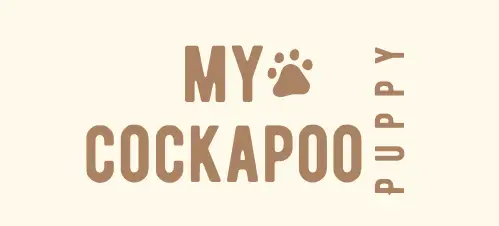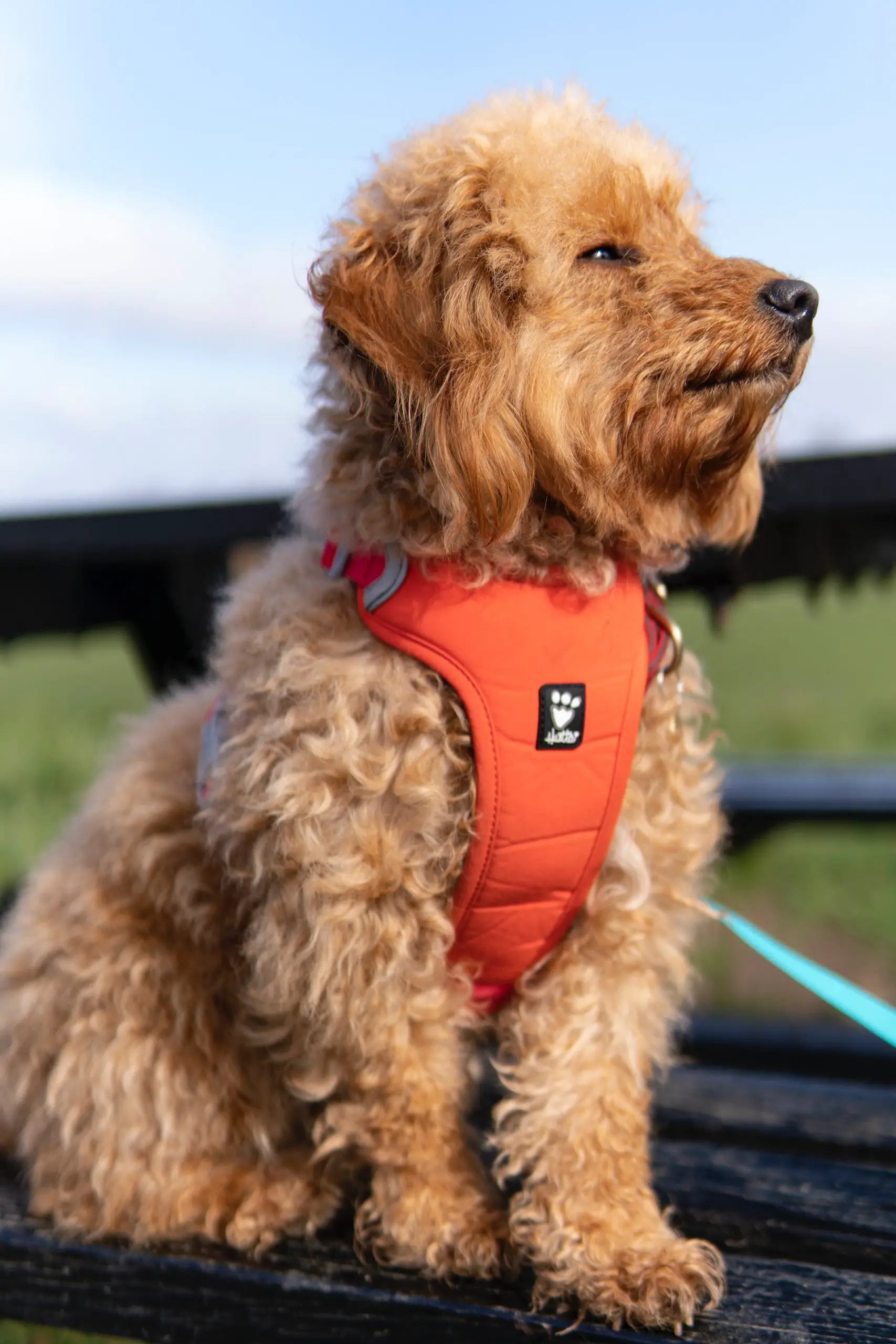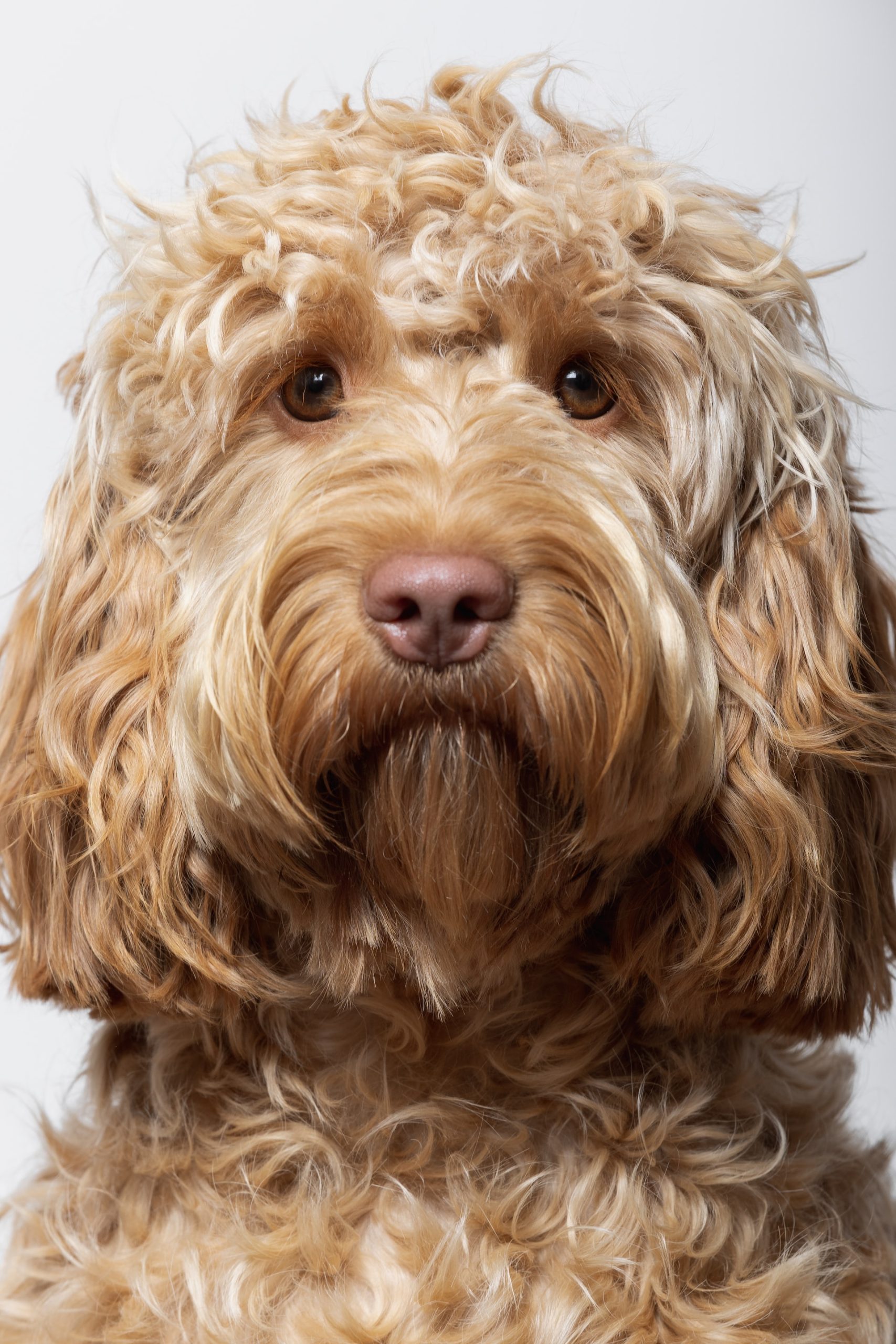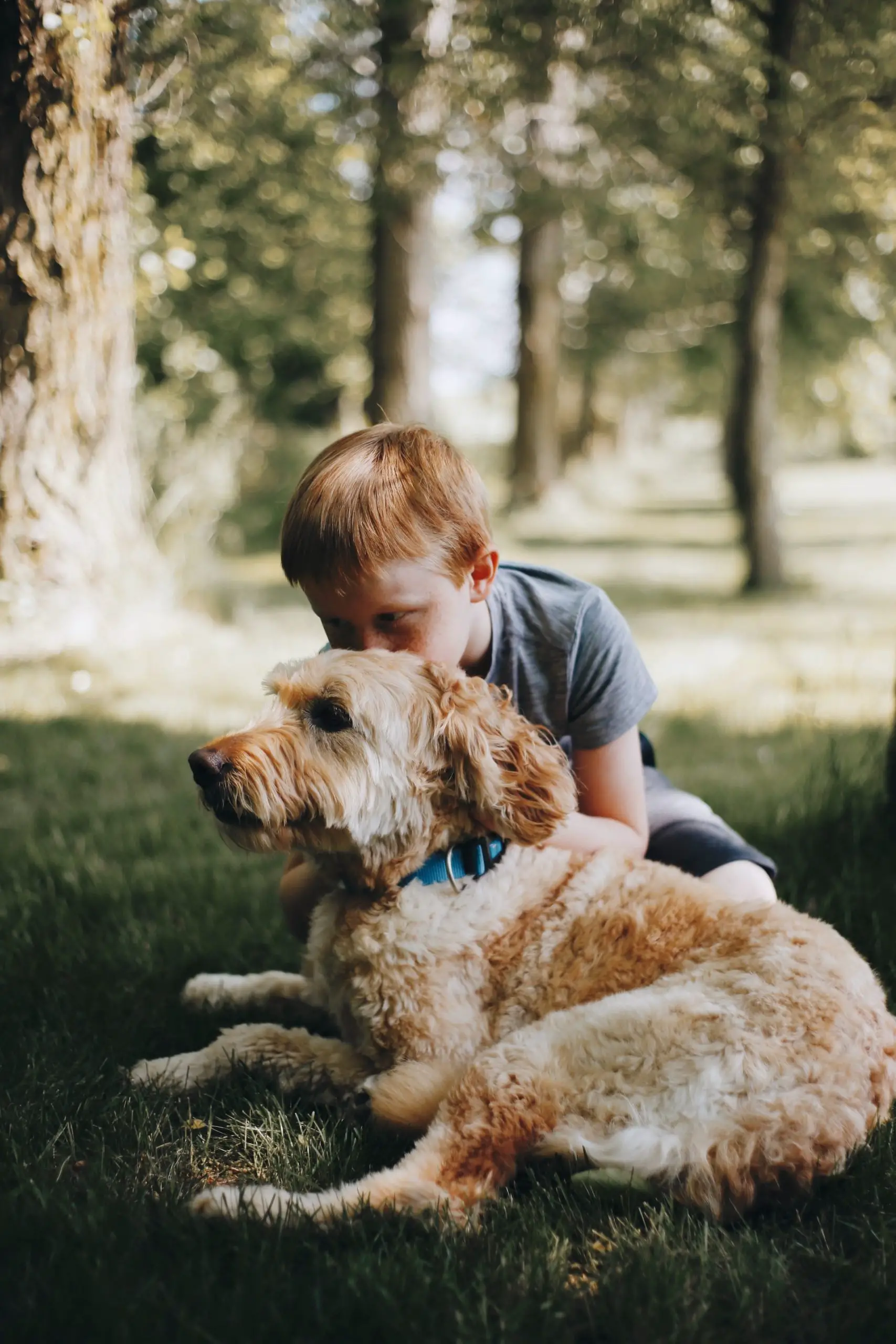There are many reasons that you might want to rescue a cockapoo and if you’re thinking of doing so, you might be wondering what steps you need to take before you actually take your new dog home. Rescuing a dog is a very rewarding process, but it can also be quite complicated, so you need to understand how it works before you start.
We’re going to look at the things you need to do before you go to a rescue centre, such as thoroughly researching and understanding the breed’s needs, and ensuring that you can meet them by assessing your own routine. We’ll also discuss what checks you can expect, and the upfront cost of adoption.
What Is A Cockapoo?
Cockapoos are a breed of dog that dates back to the 1950s. They might be one of the first “designer dogs,” which lends an unfortunate association to this friendly, happy canine. Cockapoos embody the best qualities of the cocker spaniel, but also have the poodle’s lack of shedding and high levels of intelligence.
They love to play and they are very affectionate dogs that like to be with their owners all the time. While the breed is popular, many end up in rescue shelters, so if you don’t want to get a dog from a breeder, you are reasonably likely to find a cockapoo in a rescue – although there are none that are dedicated specifically to rescuing these dogs.
They come in many different colours and they are superb family dogs. In general, they get along well with other pets, with children, and even with strangers. You should bear in mind, however, that every dog is different and your cockapoo’s nature will be determined by its individual character as well as its breed.
Most cockapoos stand between ten and fifteen inches tall, so they are not huge dogs, which makes them attractive to many would-be owners.
Why Do Cockapoos End Up In Rescue Centres?
There are many reasons that these dogs may end up in a rescue, and not all of them are related to neglect or abuse. While many cockapoos have been taken from unsuitable homes, others go to rescues as a result of the death of their owners, divorces, house moves, etc.
Plenty of these cockapoos will have come from perfectly loving homes, and will just require a second chance at life. If you are able to offer it, you’ll find them loving and rewarding companions – but be aware that while cockapoos are great pets, they are a lot of work.
Indeed, this is why many of them are sent to rescues in the first place. Owners are perhaps not aware of what high maintenance dogs they can be sometimes, and therefore take on more than they can deal with. Cockapoos need a lot of exercise and attention, and can be difficult to handle, especially when they are young.
They also need quite a lot of training, and can sometimes struggle to be part of a “pack” with other household pets. None of these are reasons that you should change your mind about getting a cockapoo, but it’s important to be aware of why some people have to give up their pets, and how cockapoos commonly end up in rescues.
Often, people don’t realise that cockapoos are unhappy if left at home alone, and find that they cannot look after them properly due to work or other commitments. Sometimes, a change in their own circumstances will lead to them having to give their dog up. Not every cockapoo in a rescue has come from a bad home.
Doing good research about a dog before you take it on is key to a successful relationship from both sides. Without it, you may end up with a furry friend that you can’t handle or one that is unhappy – so make sure you understand a cockapoo’s needs before you adopt one. We’re going to cover some of these next.
It’s also a good idea to chat to cockapoo owners and ask them about their dogs and the requirements.
What Does A Cockapoo Need?
Cockapoos are an active breed that needs quite a lot of love and attention. They require about an hour a day of exercise – and this means going for a proper walk, not simply strolling around your yard or chasing a ball across it.
Walks give dogs a good amount of mental stimulation, a chance to socialise, and an opportunity to see and do new things. You need to have the time to walk your dog at least once a day, preferably twice, in order to keep it happy. A cockapoo will need walking for at least fifteen minutes a day, plus extra exercise outside.
They like a lot of mental stimulation. Be prepared to play games and make up puzzles for your dog to keep its mind busy and ensure it’s happy and engaged. A bored cockapoo can be destructive and difficult to handle, and is often very unhappy.
Cockapoos also like lots of cuddles and attention, like spaniels. They like to sit in their owners’ laps and snuggle for hours, so you must be prepared to spend a lot of time with your dog. They dislike being left alone, and will need another form of companionship or a regular dog walker if you work long hours and can’t come home to check on them.
A cockapoo will also need lots of toys to play with while you’re out, as well as a comfortable and secure bed. A safe yard to play in also helps.
What Are The Most Reputable Cockapoo Rescue Centres?
There aren’t really any specific cockapoo rescue centres in the UK, but there are plenty of places that you can start looking if you do decide that a cockapoo is the dog for you. As well as local rescues that you can find by searching or word of mouth, consider trying:
- The Doodle Trust, which specialises in rehoming doodle dogs.
- Doodles for Rehoming, which is a Facebook page for rehoming.
- Dogs Blog, which has a list of cockapoos among their other dogs available for rehoming.
- The RSPCA shelters, which may have cockapoos among their rescues.
- Cockapoo Owners Club of GB, which is not specifically a rehoming page, but has all sorts of information and communication about cockapoos, and does include rehoming adverts on the Facebook page.
These are all great places to start looking. You can also talk to friends and family and see if anyone is aware of a cockapoo in need of a new home.
You might wish to find a cockapoo through less official channels, but be cautious if so. While Gumtree, Facebook, local adverts, and other sites can be good ways to get a pet, you have minimal protection, and no guarantees about what you’re getting.
If you find that the dog is unwell, has been mistreated or stolen, or is not actually a cockapoo, you will have minimal comeback. You may also find that the dog has behavioural problems that the owner has chosen not to disclose.
For example, if a shelter tells you that the dog is good with children, they will (usually) have had this assessed by a specialist. If a person on Facebook tells you that, there is no guarantee that they are being truthful. You need to be cautious about buying dogs through unofficial channels, as there are few protections for either buyers or sellers.
Many sites seek to block this kind of sale for that reason, so you may find you can’t even do it. Be very careful about adverts for pets online.
You should also exercise some caution with local kennels. While most are good, there are some neglectful ones. Before adopting from a centre, look around it and check how well the animals are cared for. See if the kennels are clean and whether the dogs seem happy.
A centre that looks after its dogs well is much more likely to be upfront about behaviour problems or illnesses, because they are invested in the dogs’ welfare and want to home them properly.
If you are uneasy about a centre, do further research or look elsewhere before taking on a dog from them. The larger rescues tend to have more checks in place to ensure good placement of dogs and a high standard of care. While many little charities are also superb, you should be cautious.
How Do I Start The Process Of Rescuing A Cockapoo?
Most reputable rescue centres conduct home checks. This is one good reason that they are better to deal with than an individual, because they have the resources to make sure that the dog is going to a good home. A rescue centre that does not conduct a home check should be treated with some caution, as they may not be very invested in the dog’s welfare.
Let’s walk through the process up to and including the home check.
First, you will contact a rescue centre to register your interest in a cockapoo. Usually, you will be asked a series of questions so that the rescue centre can assess your suitability and consider an initial match with a dog. If you say that you have children, for example, they will know not to pair you with a nervous or potentially aggressive dog.
You will then usually be asked to fill in an application form that gives them more details. Make sure that you answer this accurately so that they can pair you with an appropriate companion. Usually, this form will ask questions about your lifestyle. If in doubt, call the rescue centre and ask them for help filling the form in.
This form will further help the centre determine whether your home would be suitable for any of their cockapoos, and which one if so – taking your preference into account, of course. If successful, you will then be subject to a home check. Some rescues even do more than one home check for some of their animals.
What A Home Check Entails
A home check is nothing to be concerned about. Usually it involves a representative from the rescue visiting your home to assess its suitability for the dog. They may want to see things like how secure your garden is, whether the fencing is strong and high enough for the dog, and whether the space is appropriate.
You may also be asked to show them your setup for the dog – such as where the dog will sleep, how you will protect it from any potential hazards (especially while it is settling in), and that you have thought about the things it will need.
You don’t need to have everything ready at this stage, but you should be able to show you have considered what you’ll have to buy for the dog, and the space that will be dedicated to it.
They might want to meet other pets to assess them, and they may wish to meet your family members to check they are all happy with the idea of having a dog, and will be suitable owners. If you have children, this is particularly important for both sides.
The representative may also look at any potential issues such as problems with neighbours (especially if the dog you are going to rescue barks a lot) or known behavioural problems and where these might be particularly tricky.
Home checks may cover other questions such as your daily routine, your work hours, who visits your home regularly, who will look after the dog if you go away, how you will handle car rides, and general dog welfare.
They will likely discuss vet care and costs, treatment plans, etc. In short, they will make sure that you can offer a suitable home and the dog won’t either be neglected, or returned to the shelter because it was not what you expected.
If you fail the home check for reasons such as poor fencing, you are likely to be given an opportunity to rectify this. However, if the representative believes that the dog would not thrive in your care, they may suggest a different dog, or reject your application.
What Happens Next?
You may sometimes get a secondary home check, or you may be moved to the next stage of the adoption process.
Rescues will charge an adoption fee, often somewhere around £100. This will usually cover certain costs, such as the home visit, and up-to-date vaccination/worming/flea treatment. You may be given a list of what it includes. Some money will go to the cost of running the shelter.
If you are wondering why shelters charge a fee, it is partly to ensure that the dog goes to a loving home that is capable of caring for it financially. If the fee is too much for you, that suggests you do not have the funds to look after the dog properly.
This cost also acts as a deterrent for unscrupulous people who might use the dogs for baiting or fighting.
Once this fee has been paid and the paperwork finalised, you will usually be allowed to take your new friend home! Prior to this point, you need to make sure that you have a quiet, safe space set up for your cockapoo. Even a dog that has never been mistreated is likely to be nervous and stressed by the whole process.
The dog should have a soft bed, some toys, and comfort items, but they should also have quiet. It is important for your dog to be able to retreat and lie down if it needs some time to process and get used to its new surroundings. If you have young children, helping them to understand this and give the dog space is crucial.
You will need to treat your new dog gently but firmly. Cockapoos are very intelligent and strong guidance will be necessary from the start. Understanding clear rules will also help your dog to feel more settled and comfortable as it adapts to the new environment.
Don’t be afraid to call the rescue for advice once you have adopted the dog. Most rescues will be happy to offer ongoing support and suggestions, or answer any questions that you have about your new friend even once the adoption process has finished. After all, they are keen for it to work out!
Give your dog several weeks to settle in, and don’t expect “normal” behaviour for quite some time. Being rehomed is a huge amount of upheaval for the dog to go through, and no matter how lovely you and your family are, it may take a little while for the dog to feel settled and secure with you.
Conclusion
Rescuing a dog is a highly rewarding process that will give you a brand new family member to love and play with, and cockapoos are known for being wonderful dogs that really appreciate and adore their owners.
There are quite a few hoops to jump through in order to reassure a rescue that you are the right person for one of their dogs, but this maximises the chance of successful rehoming, and should hopefully ensure that both you and the dog are happy together!








We ar e looking to adopt/rehom a cockerpoo. Our Dsughter has two, and we love them to bits
We lost our dearest Cocker Spaniel earlier in the summer.
Hi Carol, we love our cockapoo Lottie so much! so sorry to hear about your spaniel!